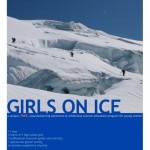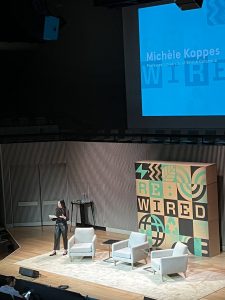Glaciers and mountains in the media
Part of doing science is the responsibility to share and communicate our latest understandings with the world outside of the ivory tower. To that end, I regularly contribute to radio, tv and print media coverage of all things related to climate change, landscape change, glaciers and mountain peoples, eco-anxiety and learning from indigenous and place-based communities. Some of my recent contributions include:
- contemplating the unintended consequences of geoengineering for ice loss in Vice News
- discussing the cascading effects of climate change on glaciers, landslide hazards and downstream water resources for CBC and CBC Radio’s What on Earth podcast
- highlighting the vulnerability of Canada and the world’s water towers (i.e., glaciated mountains) to climate change in National Geographic, CBC, Global News, and Radio Canada
- exploring climate grief, ecoanxiety and the psychological stress of doing research on climate change, for the Ubyssey, Inverse News and Storycorps
- pondering whether we could flood deserts to reduce sea level rise on CBC Radio’s Quirks and Quarks
- discussing how glacier melt impacts and is impacted by the ski industry and mountain tourism, for Powder Magazine and Pique Newsmagazine
- The increase in landslide and tsunami hazards due to glacier retreat in coastal BC and Alaska, CTV news, CBC’s On the Coast
- talking about how rising ocean temperatures are melting the Greenland and Antarctic Ice Sheets in the New York Times, the Wall Street Journal and Wired magazine.
For some examples of conversations on the cascading effects of climate change and glacier loss, check out the following podcasts:
- Canada’s glaciers becoming an endangered species and A Cascade of Hazards for CBC’s What On Earth
- If a glacier falls in a fjord…, and Sleeping on a Glacier for Spacepod, and
- a YouTube video of a conversation I had with the Salt Spring Forum
I have been a scientific advisor and presenter on several television documentaries about glaciers and climate change, including Operation Iceberg, a BBC documentary on the factors that drive glacier change and iceberg production in Greenland, the BBC series Nature’s Weirdest Events, and Expedition Alaska, a documentary about the impact of climate change on the state of Alaska, made for the Discovery Channel.
I have been a TED Fellow and TED Senior Fellow, which provided a platform for me to talk about the importance of glaciers and glacier change from Antarctica to the Himalayas. I posted some thoughts on why the demise of the Antarctic ice shelves will affect us all on the TED Ideas blog, and spoke about Himalayan glacier meltwater resources on the TED Fellows Friday Blog, and in an editorial for The Mint (the Indian edition of the Wall Street Journal). Along with some other great women scientists who are also TED Fellows, we are engaged with increasing dialogue about perceptions of women in STEM fields, such as this piece published on Medium.org.
Check out the hundreds of phenomenal talks and performances given by innovators and changemakers at ted.com, and lessons worth sharing at TedEd, including my geomorphology lesson on Why is Mt. Everest so tall?
Using art and science to communicate climate change
The cascading effects of climate change create their own sound; but no one has really bothered to listen. Since 2017, I have been collaborating on an art/science project with percussionist and composer Susie Ibarra on Water Rhythms: Listening to Climate Change, funded through National Geographic, Fine Acts, TED, Counterflows and the Asian Cultural Council (thus far). Water rhythms is a story of climate change told by the ice and water. It is the story about the dualism of water, the universal connector of nature and humans, that is both beautiful and fragile. It is an intergenerational story of the rapid change and depletion of our glaciers and freshwater sources worldwide. Humans are inextricably connected to the earth’s freshwater as a basic building block of life; the same rhythms of water flow through our bodies, our cultures, histories and our music. These water rhythms are disappearing as the glaciers worldwide disappear in response to climate change.
We are exploring the sounds of glacial recession and its myriad of downstream effects, by recording the sounds of ice melting and sediments moving along a transect from source to sink, from the glaciated mountain tops to the ocean. These field recordings have been turned into sonic installations and storytelling pieces . By inviting audiences into the immersive, embodied experience of listening to these disappearing water rhythms from mountains near and far, we hope to engage a deeper comprehension of the ways in which we are all intertwined by freshwater, its beauty and its fragility.
Science in policy
Playing about on and with glaciers, 99% of which have been in steady and increasingly rapid retreat over the past few decades, I became very interested in local and international political and policy debates surrounding climate change. So much so, that during my doctoral years I took a break from academia and went to work in the U.S. Congress as a legislative consultant on climate change policy for Congressman Jay Inslee, 1st-district Washington State — now the Governor of Washington State — and got a healthy dose of the sausage-making that goes on behind the scenes in the name of policy. For others interested in understanding the inner workings of national and international politics, and how science is and is not used in policymaking, I highly recommend the AAAS Congressional Science Fellowship program.
Experiential education
 Part of my broader mission is to convince others that playing with, on and near glaciers is fun! I co-founded Girls on Ice, now Inspiring Girls Expeditions, a series of experiential field courses for girls aged 14-18 that combines science, art and backcountry wilderness skills. Highly recommended for a curious, outdoorsy young woman you might know!
Part of my broader mission is to convince others that playing with, on and near glaciers is fun! I co-founded Girls on Ice, now Inspiring Girls Expeditions, a series of experiential field courses for girls aged 14-18 that combines science, art and backcountry wilderness skills. Highly recommended for a curious, outdoorsy young woman you might know!
I have also been an advisor for the Juneau Icefield Research Program, a summer-long extensive field research and exploration program for high school – graduate students interesting in glaciology, on the Juneau Icefield, Alaska.
 Finally, I used to coordinate and lead high-school age work crews building and restoring trails in some of the most beautiful and remote state and national parks in the western U.S., through the Student Conservation Association. See links to find out more about these excellent youth/educational programs.
Finally, I used to coordinate and lead high-school age work crews building and restoring trails in some of the most beautiful and remote state and national parks in the western U.S., through the Student Conservation Association. See links to find out more about these excellent youth/educational programs.



